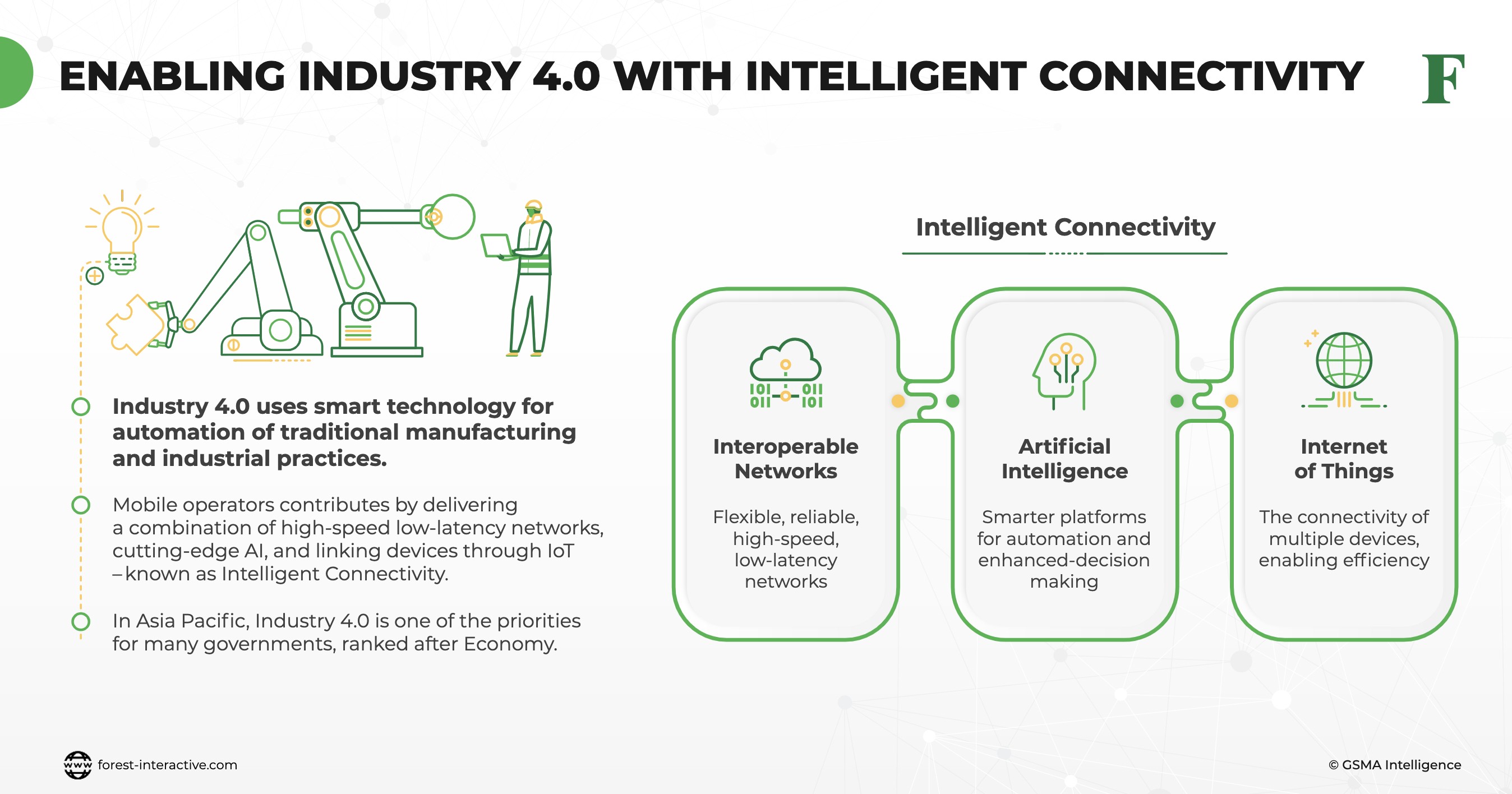
The pandemic has disrupted every aspect of living across the world. Over time, daily activities such as work, learning, shopping, and social interactions have shifted to online channels due to various safety and health measures imposed to curb the spread of COVID-19. Consequently, physical distancing measures and lockdowns in most countries have had an adverse effect on the economy, resulting in contractions and thousands of job losses in many countries.
Against this backdrop, country leaders and other stakeholders are pivoting to digital technologies in an effort to revive the economy, increase public services outreach and efficiency, and become more resilient to future shocks. Countries in Asia-Pacific have made significant progress in outlining plans for delivery of Industrial Revolution 4.0 (IR4.0) objectives in the region with connectivity as one of the main highlights.
According to the GSMA Intelligence, intelligent connectivity combines advanced networks, cutting-edge artificial intelligence (AI), and billions of devices connected through the Internet of Things (IoT). This fusion will be the key to realizing IR4.0, unlocking transformational new capabilities across multiple industries and sectors of a digital society.
“IR4.0 is a gateway to a whole new ecosystem which encompasses interconnectivity, automation, machine learning, cloud computing, and augmented reality—to name a few. An ideal IR4.0 world would see the existence of a cyber-physical system where physical production and operations merge with smart digital technology, and billions of devices are connected to drive operational efficiencies,” said Johary Mustapha, CEO of Forest Interactive.
In early 2020, mobile operators have pushed their connectivity capacity to build the foundation of enhanced intelligent connectivity with the rollout of 5G in the picture. The next-gen network, which has seen a positive outlook despite continued global disruption post-pandemic, is available in more than ten countries in Asia-Pacific, including Australia, Japan, Singapore, South Korea, and Thailand.
“Fast, reliable, and secure wireless connectivity is also important to enable greater flexibility in IR4.0 operations. While 4G continues to be a significant driver for holistic digital inclusion, 5G will serve as a complement that empowers governments and enterprises across a broad range of sectors to boost efficiency and profitability, which is of utmost importance to thriving in a more competitive and challenging post-pandemic world,” noted Johary.

 Company Profile
Company Profile Brand Identity Guidelines
Brand Identity Guidelines